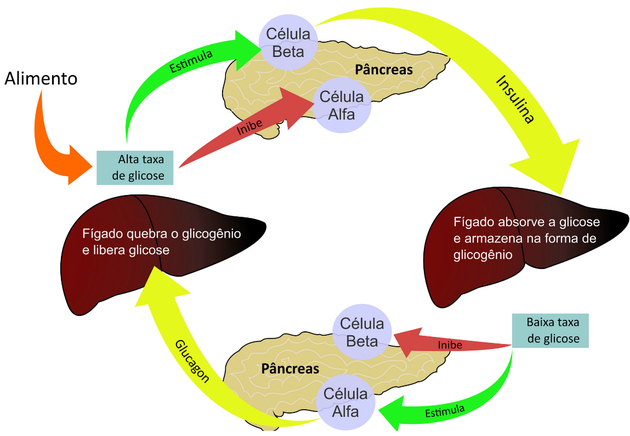Since we have months of 28, 30, and 31 days, some doctors often suggest that calculations for a woman's length of pregnancy be done according to the lunar calendar. This basically means considering the following:
- 1 lunar week = 7 days
- 1 lunar month = 4 weeks of 7 days = 28 days
As the period between the beginning of pregnancy and the day of delivery is about 280 days, we can see that this value corresponds to 40 weeks. Since a lunar month is 4 weeks, 40 weeks of pregnancy corresponds to 10 lunar months.
Now that you understand these accounts, let's move on to talking about the first month of pregnancy. During this period, between the 1st and 4th lunar week, the zygote is implanted in the female uterus, through a process called nidation. Furthermore, it is at this stage that the placenta and umbilical cord begin to form.
Before explaining the other events of this month, one more point is important: the fact that, to facilitate the calculations regarding the development of the future baby, and also because it is not always possible to know, exactly, the day when the conception; the week of the last menstruation is considered as the first week of pregnancy.
Therefore, it is usually between the end of the second week and the beginning of the third that fertilization actually takes place; since it is around these days that ovulation occurs. Before this event occurs, the female body undergoes some changes, such as the increase in the thickness of the endometrium, which is the thickest wall. internal uterus, and the reduction of cervical mucus, facilitating the passage of sperm, if the woman has sexual intercourse in this time course.
Fertilization usually occurs in the fallopian tubes and in approximately nine days the zygote will be directed to the uterine cavity. Meanwhile, and for a long time, it will go through successive divisions, doubling its size every twelve hours. When presenting characteristics similar to a compact ball of cells, we can say that it is in the morula stage. Then, about five days after fertilization, with the appearance of a fluid-rich cavity in its interior, the zygote begins its blastula, or blastocyst, stage. It is at this stage that it will implant itself in the mother's uterus, around the 7th day after fertilization.
After nidation, the placenta and umbilical cord begin to form. Such structures provide fetal respiration and nutrition, waste excretion, and hormone production and transfer. The gestational sac, filled with amniotic fluid, is also formed, protecting the future baby from trauma and infection.
Do not stop now... There's more after the advertising ;)
One of the hormones produced in the placenta is human chorionic gonadotropin (HCG), which appears around the third week. The detection of its presence in the maternal body is what allows women to confirm their suspicions of pregnancy through urine or blood tests (more efficient).
Although many women do not experience such events, some are able to identify certain signs of pregnancy, such as discomfort in the lower abdomen during the nesting period, tiredness, increased heart rate, sudden changes in mood, frequent urge to urinate, increased vaginal discharge, refined sense of smell and subtle sensation of breasts sore. However, in many cases, pregnancy is suspected only when menstrual delay is detected, usually in the fourth week or a little later.
At the end of this lunar month, the zygote measures about one millimeter, and starts its gastrula stage, characterized by the differentiation of the three germinal layers: the ectoderm, which gives rise to the nervous system, epidermis and adnexal structures of the skin; endoderm, which gives rise to the inner lining of the digestive system, some structures associated with digestion, and respiratory systems; and mesoderm, giving rise to the muscles and the cardiovascular and urogenital systems. Before entering the second month of pregnancy, the embryo already has the neural tube, which in the future will form the nervous system; the notochord and a primitive intestine, called the archenteron.
Feeding the pregnant woman:
Intake of folic acid, three months before conception and three more after this event, prevents problems related to the closure of the neural tube, preventing malformations such as anencephaly and spine bifid. Thus, it is important to include in the diet foods such as egg yolks, broccoli, liver, grains and fish in general, evaluating with the doctor whether the supplement of this vitamin is necessary.
Omega 3 is also an important nutrient as it prevents maternal depression and improves your bowel function. It is found in fish, mainly from salt and deep water, walnuts, chestnuts, watercress, spinach and flaxseed.
Important:
Smoking, alcohol and other drug use should be stopped now, since such habits can cause countless health problems, both for the mother and for the embryo. If you periodically use specific remedies, it is wise to talk to your doctor about it, seeking the best alternative for the case in question.
On the other hand, moderate physical activities, always under professional supervision, and also a diet balanced help in several aspects, such as weight control and frequency improvement. cardiorespiratory
By Mariana Araguaia
Biologist, specialist in Environmental Education
Brazil School Team


